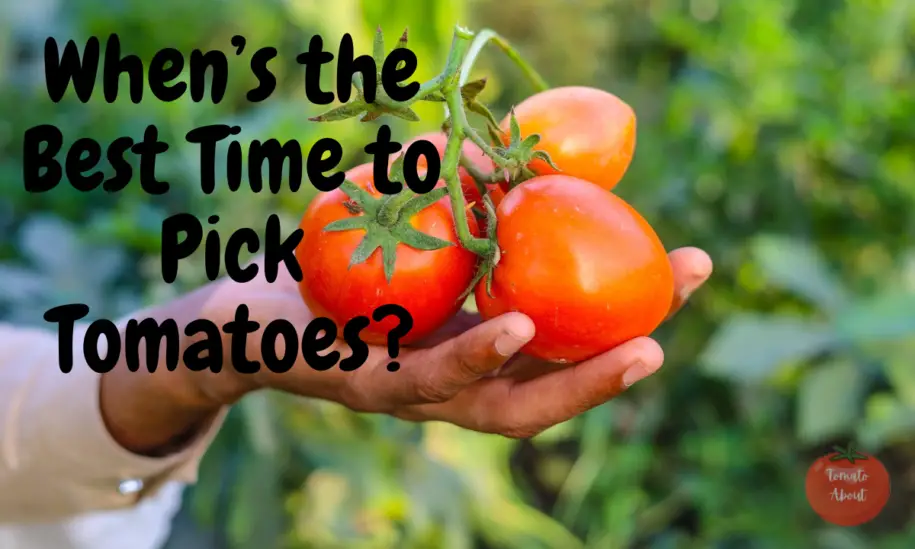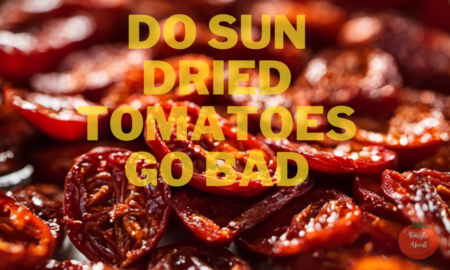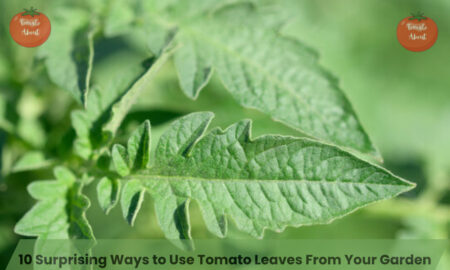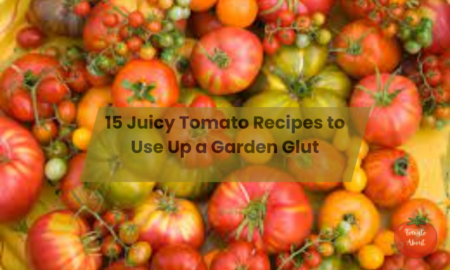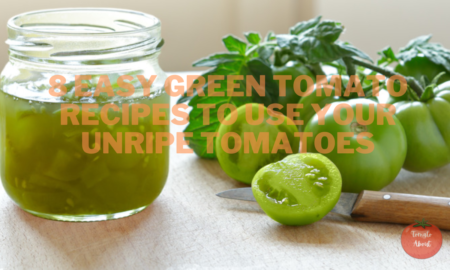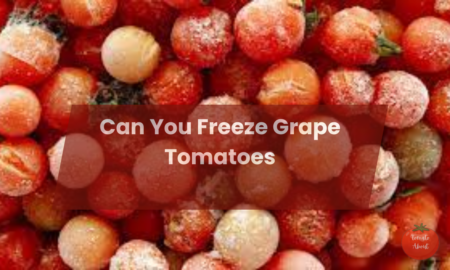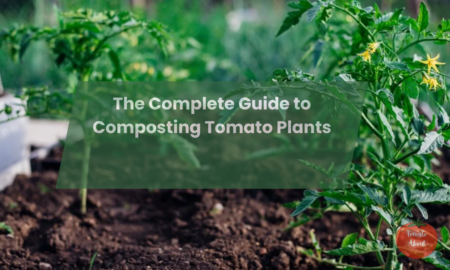Summer is in full swing and backyard veggie patches are bursting with ripe, red tomatoes just begging to be picked. As any home gardener knows, timing is everything when it comes to harvesting produce at peak ripeness. Picking tomatoes too early means you miss out on full, complex flavor while leaving them on the vine for too long can lead to overripe tomatoes that turn mealy or mushy.
So when is the perfect time to pluck those plump, juicy tomatoes? This comprehensive guide will walk you through the key signs, tests, and techniques for identifying when your tomatoes are at their flavorful best. Read on for pro tips to help you get the most out of your tomato harvest this season.
How to Know When Tomatoes Are Ripe and Ready to Pick
Determining ripeness in tomatoes comes down to watching for a combination of factors. Paying attention to these signs will ensure you enjoy the ultimate tomato experience with maximum taste and texture.
Check Tomato Color
The most obvious indicator of ripeness is the color of the tomato. However, different tomato varieties ripen to different colors, so you’ll need to know what to look for depending on the type you planted.
Red tomatoes – Most common large slicing tomatoes change color progressively from green to red as they ripen. Wait until tomatoes are fully red with no green, yellow, or orange remaining before harvesting them.
Yellow/orange tomatoes – Ripe when the green coloring has completely disappeared and the fruit is a solid yellowish-orange hue.
Green tomatoes – More challenging since green is their mature color too. Rely on other tests described below to gauge readiness.
Multicolor varieties – Allow all the non-green colors to develop fully for optimal ripeness.
Cherry tomatoes – Ripen to a deep, uniform red. Still, use other indicators since fast ripening makes it easy to miss the peak. Don’t pick cherry tomatoes until they are fully red for the best flavor.
No matter the tomato type, resist picking based on color alone. Use some of the other tests below too for the most accurate assessment.
Do The Squeeze Test
Gently squeeze the tomato. If it’s ripe, it will give slightly but still feel firm. An unripe tomato will be hard, while an overripe one might be mushy [3]. The squeeze test works well for all tomato types and is the best way to assess fruit that stays green when ripe.
Apply just enough pressure to gauge the fruit without bruising. A ripe tomato should feel like a peach, not squishy but with some “give”. This takes practice so test tomatoes at different stages to get the hang of it.
For larger tomatoes, squeeze near the blossom end. Ripe ones often soften here first. Also pay attention to heavy-feeling tomatoes, another sign of ripeness, on the plant.
Check for Aroma
A ripe tomato emits a strong, sweet tomato fragrance that’s hard to mistake once you’ve smelled it. Sniff near the stem end to detect the characteristic tomato scent [4]. If the aroma seems weak or non-existent, let it continue ripening.
Some people claim you can identify ripeness by smell even before tomatoes start changing color. While harder to detect through tomato plant foliage, fragrance is a reliable indicator if you get close to the fruit.
Make use of this early tip-off to ripeness when harvesting green varieties. Also, rely on it to find the first perfectly ripe tomatoes on indeterminate vines that mature gradually.
Look for Splitting Skin
As tomatoes ripen, the skin splits and the segments begin separating inside. Check for visible splits or cracks encircling the stem. If the skin and seams look smooth, the tomato likely needs more time on the vine.
This checklist item serves as an advanced signal that tomatoes are very close to the ideal picking stage. You’ll mainly see pronounced skin cracking on large beefsteak and heirloom types.
Splitting happens right before the ripening process completes as sugars build up inside. However, don’t wait long once cracks appear or risk pests and diseases entering through the openings.
Consider the Season
Tomatoes naturally ripen during the warmest months. In most regions, peak harvest is mid to late summer. Time your picking for July through September for best results.
Monitor the weather and allow extra ripening time if temperatures are cooler than normal. Warm, sunny conditions accelerate ripening.
July and August are typically the months when tomatoes are ready to pick. Pay attention to the first and last frost dates where you live. Plan your tomato planting schedule so fruits have the entire hot season to develop. In short, seasons, choose quick ripening early varieties.
It can be tempting to harvest tomatoes as soon as they show any color. But remember cooler temps slow maturation, so be patient early and late in the growing season.
Watch Tomato Size
Tomatoes should reach their expected mature size for the variety before picking. Common slicing tomatoes are ready to harvest when 2 to 4 inches across. Don’t pick based on size alone though, as overripe tomatoes can get quite large.
Small tomatoes have thinner skin that’s easily damaged if picked too early. Wait until cherry and grape types fill out to about 1 inch for best results.
When properly pollinated and cared for, tomatoes continue growing until they ripen. So monitor fruit swelling as it approaches estimated size at maturity.
By keeping an eye on all these indicators, you can determine the perfect time to start picking for maximum flavor and quality. Next, let’s look at what to do if you need to harvest tomatoes early.
When You Have to Pick Tomatoes Before They’re Ripe
Sometimes conditions make it necessary to pick tomatoes before ideal ripeness. Certain circumstances that might force early harvesting include:
- Weather threats – Forecast of heavy rain, hail, or frost that could damage the crop.
- Critter issues – Ripe tomatoes attract birds, squirrels, or other backyard thieves.
- Plant health problems – Foliage diseases or pests ruining the vines.
- Overripe fruit – A few tomatoes become overripe and risk rotting on the vine.
- Out of town – Leaving on vacation with ripe fruits still on the plants.
- For the store – Tomatoes are often picked early by commercial growers to allow ripening during shipping.
When green or partially ripe tomatoes need to be picked early, follow these tips to continue ripening indoors:
- Use pruners or scissors for clean cuts – Pulling tomatoes off vines can damage stems and lead to rot.
- Sort by ripeness – Set aside any tomatoes that are showing good color change as they’ll ripen faster.
- Store at room temperature – Keep tomatoes in a single layer out of direct sun.
- Allow air flow – Don’t overcrowd tomatoes or enclose them in plastic bags.
- Add a ripening agent – Place tomatoes with ethylene-producing apples or bananas in a paper bag.
- Inspect daily – Check for ripeness progress and remove any tomatoes with signs of decay.
- Use quickly once ripe – Fully ripened tomatoes have a shorter shelf life than vine-ripened ones.
Now let’s go over easy methods for accelerating the ripening process when you need tomatoes in a hurry.
Fast Techniques for Ripening Tomatoes Quickly
If you end up with a bowl of firm, green tomatoes, don’t despair. There are several effective tricks for speeding up ripening right on your kitchen counter:
Let Them Sit at Room Temperature
Keeping tomatoes at 65°F to 70°F allows ripening enzymes to work. Avoid refrigeration which stops the ripening process in its tracks [8].
Choose a spot out of direct sunlight to prevent overheating. Counter-rotating ensures even exposure to ambient warmth and ethylene gas.
Group tomatoes in a single layer rather than stacking for air circulation. Resist placing on paper towels that can stick.
Enclose in a Paper Bag
Trapping ethylene gas given off by the tomatoes creates a ripening chamber. For faster results, add an apple or banana to boost ethylene.
Fold the top of the bag over securely to contain the gases. But allow some openings for a little air exchange so condensation doesn’t build up.
Check the tomatoes every day to monitor ripening progress. Remove any that are fully ripe to avoid over-ripening in the bag.
Bake in the Oven
Place tomatoes in a 200°F oven on a baking sheet. The gentle heat helps break down cell walls. Baked tomatoes work great in salsa and sauces.
It takes 15-30 minutes to notice ripening effects. Baking works best for green tomatoes since it doesn’t improve color.
Higher heat can produce a roasted flavor. Keep temps moderate and check often to prevent cooking the tomatoes.
Take a Hot Water Bath
Heat stimulates ripening hormones. Briefly submerge tomatoes in hot (not boiling) water then set out to finish ripening. This jumpstarts tough-to-ripen varieties.
Use a thermometer to maintain water between 105°F and 115°F. Dunk tomatoes for a few minutes until skins start to split.
Shock tomatoes immediately after in ice water to stop cooking. Then dry thoroughly before storing at room temperature.
Expose to Sunlight
The energy from the sun’s UV rays triggers pigment and flavor formation. Set tomatoes in a south-facing window for a flavor and nutrition boost.
The direct sun helps ripen tomatoes faster thanks to warmth and phytochemical stimulation. Rotate fruits periodically for even exposure.
Just a few days of sunlight can improve both red and green tomatoes. Keep an eye on moisture and avoid overheating.
Prune Tomato Plants
Pruning away new buds and leaves after mid-season directs the plant’s energy into ripening existing fruit quickly.
Cut back plants to expose tomatoes to sunlight. Remove suckers that aren’t fruiting for best results.
With less vegetation to support, the plant puts resources into maturing and sweetening tomatoes still growing.
With these quick tricks, you can coax even stubborn tomatoes to full flavor quickly. But what about putting tomatoes in the fridge?
Should You Refrigerate Tomatoes to Ripen Them?
You’ll often see people store tomatoes in the refrigerator to ripen. However, this is actually the worst place to put unripe tomatoes [9]. Refrigeration temperatures (around 40°F) severely slow the ripening process and degrade flavor quality.
The cold damages tomatoes in several ways:
- Slows ripening by inhibiting ethylene production
- Stops development of full sugars and aroma
- Breaks down cell structure leading to a mealy texture
- Causes faster decay after removing from fridge
Storing tomatoes below 50°F literally halts the biochemical processes driving maturation. Refrigeration also ruins texture by rupturing cells and degrading pectins.
The bottom line is never refrigerate fresh tomatoes until they are fully ripe. Only then can the cold help slow further ripening and extend shelf life once peak flavor is reached.
Let’s wrap up with a handy checklist of the key signs your tomatoes are ready for harvest.
Final Tips for Maximum Tomato Flavor
Follow this checklist when checking your tomatoes to identify peak ripeness:
🔹 Wait for full-color change to red, yellow, etc.
🔹 Perform the squeeze test – firm but with a slight give.
🔹 Check for tomato fragrance at the stem end.
🔹 Inspect for splitting skin and segmenting.
🔹 Consider warm weather and mature size.
🔹 Avoid refrigeration until completely ripe.
🔹 Use quick tricks to ripen picked tomatoes indoors.
With the knowledge from this guide, you can become a tomato-picking pro. Watch for these telltale signs of ripeness to enjoy the full, tangy sweetness and juicy texture of garden-fresh tomatoes at their flavorful best. Now get out there and start harvesting!
When Should You Never Pick Tomatoes?
After reading about when tomatoes are ripe for picking, you may be wondering if there are times you should avoid harvesting them. Here are a few instances when it’s best to keep those tomatoes on the vine a little longer:
When Plants are Stressed
Tomato plants need lots of energy to grow fruits to maturity. If the plant is stressed by insects, disease, underwatering, or other problems, its resources go toward survival instead of ripening.
Resolve any plant health issues before picking tomatoes to ensure optimal flavor. Healthy vines produce the best-tasting fruits.
After Heavy Pruning
Giving tomato plants a major haircut stresses the plant temporarily while it recovers. Hold off harvesting for at least a week after hard pruning or plants may struggle to ripen tomatoes.
During Hot Weather Spells
Extreme summer heat can damage plants as they divert energy to survival. Tomato blooms often drop during heat waves.
Avoid picking during intense heat and let plants regroup for a week or two before expecting ripe tomatoes. Quality suffers if harvested under major stress.
After Transplanting
Newly transplanted seedlings require time to establish roots before they can support fruit growth and ripening. Wait at least two weeks after transplanting seedlings before picking.
In Early Morning
Tomato flavor compounds peak later in the day. For sweeter tasting tomatoes, do harvesting in the afternoon when fruits have had time to absorb sun and warmth.
During Rainy Weather
Wet conditions promote tomato diseases and make ripe fruits prone to splitting. Pick a dry day after plants have had time to dry out for the healthiest tomato harvest.
Too Early in Season
It can be tempting to harvest fruits as soon as they show any color change. But chillier temperatures early in the growing season result in lower sugar content and flavor. Be patient and leave tomatoes on the vines until the weather warms.
By avoiding harvesting during these stressful situations, you can ensure the tomatoes get the time they need to reach optimal eating quality.
Storing Tomatoes After Picking
Now that you’ve mastered determining ripeness and picking tomatoes at their flavor peak, proper storage is key to preserving that just-harvested garden goodness. Here are some tips for post-harvest tomato care:
Never Refrigerate Ripe Tomatoes
We covered this earlier but it bears repeating. The fridge is public enemy #1 of great tomato taste [10]. Chilling damages cells stops ripening, and ruins texture.
Keep Them at Room Temperature
Ripe tomatoes are happiest stored at around 70°F out of direct sun. The warmth allows them to continue ripening while avoiding temperature extremes.
Choose Open or Perforated Bags
To extend shelf life, place ripe tomatoes in plastic bags with holes or openings. This maintains humidity while allowing gases and ethylene to escape.
Sort by Ripeness
Separating ripe tomatoes from those needing more time prevents over-ripening of the advanced fruits. Check tomatoes every couple of days and remove any getting too soft.
Avoid Stacking Them
Prevent bruising ripe tomatoes by arranging them in a single layer. Nestling in bowls or baskets works better than piling them up.
Watch for Signs of Decline
Throw out any tomatoes that are leaking, getting mushy spots, or smell bad. Removing bad apples (or tomatoes!) prevents neighboring fruits from spoiling too.
Consider Canning for Long-Term Storage
While fresh tomatoes last a week or two, preserved ones can be enjoyed all year. Turn bountiful harvests into canned sauce, salsa, and other goodies.
Following these storage tips helps you get the most out of your tomato crop after all the effort of raising it. With proper post-harvest handling, backyard tomatoes stay juicy and delicious for longer.
Frequently Asked Questions
Should you pick tomatoes before they turn red?
It’s best to leave tomatoes on the vine until fully colored, but you can pick once mature size is reached if needed. They will continue ripening off the plant if mature. Avoid picking tomatoes that are still small or mostly green.
Do tomatoes ripen faster if you pick them?
Yes, green tomatoes will generally ripen faster when picked since all the plant’s energy goes into the remaining fruit. However, the vine-ripened taste is considered superior. Only pick early if necessary.
Why are my tomatoes not turning red?
Tomatoes may fail to ripen due to too little sun, extreme heat, overwatering, compromised roots, or other stressors. Ensure plants get 6+ hours of sun, reduce watering, and resolve any health issues.
How do you know if tomatoes are good?
Ripe tomatoes feel heavy, smell sweet, and give slightly when squeezed gently. They should be free of blemishes or soft spots. Vine-ripened tomatoes will have the best flavor so pick fully colored fruit.
Conclusion
Determining the perfect time to pick tomatoes for maximum flavor and quality takes patience and practice. Pay close attention to color, firmness, fragrance, size, and season when checking ripeness. With the tips in this guide, you’ll be rewarded with the most delicious, juicy homegrown tomatoes. Happy harvesting!

